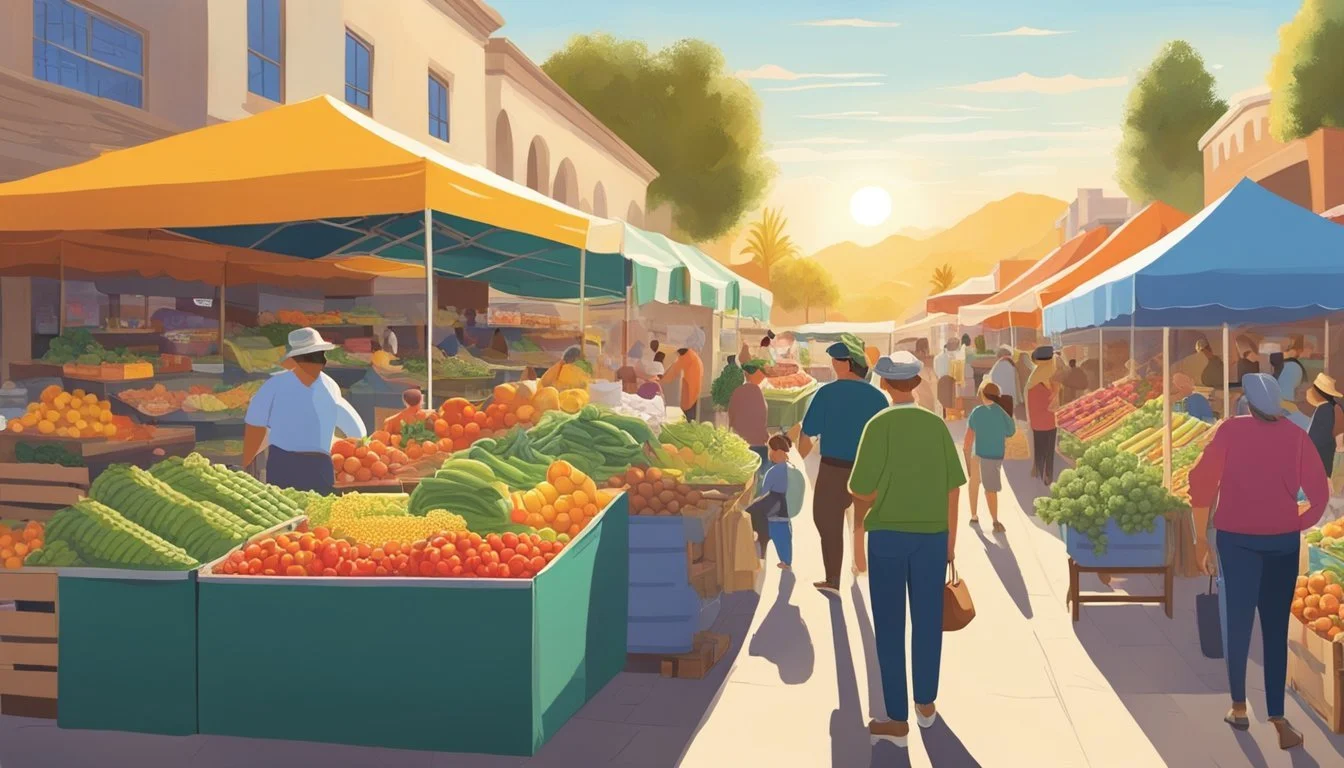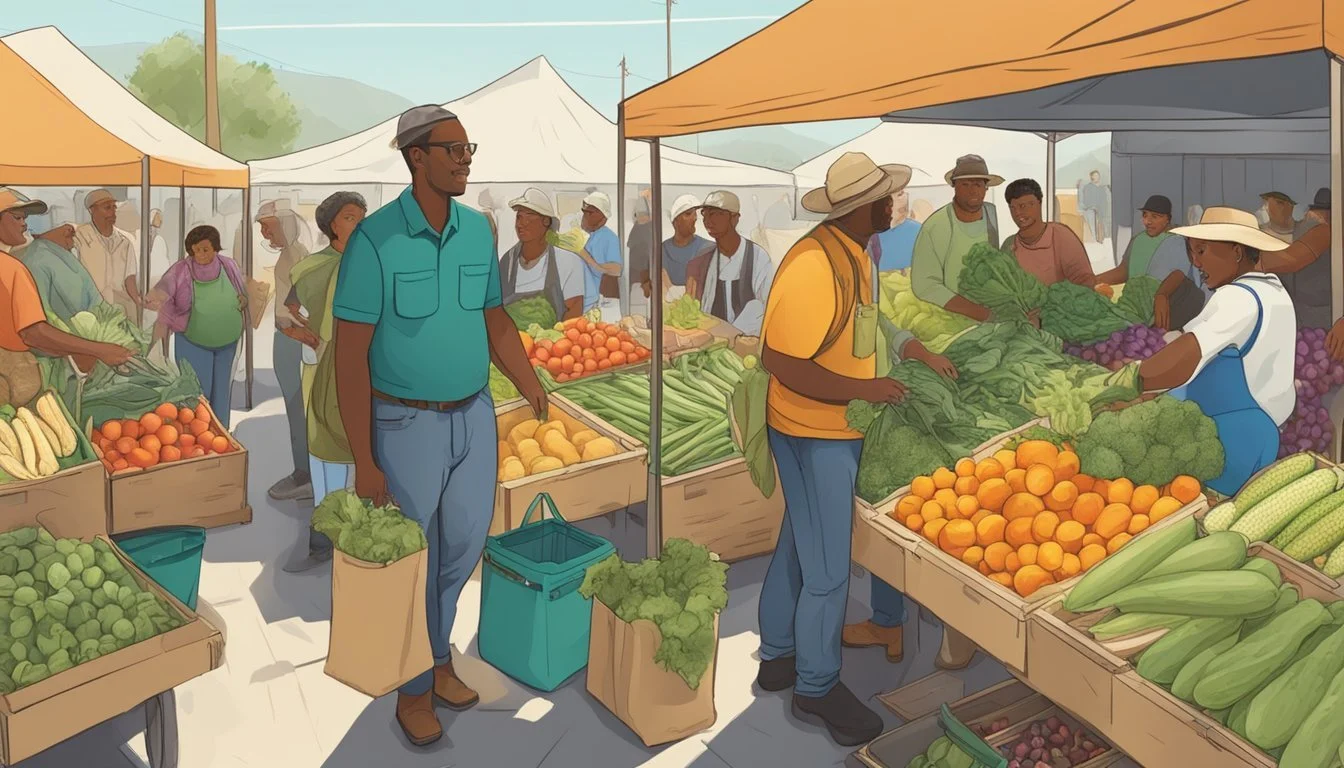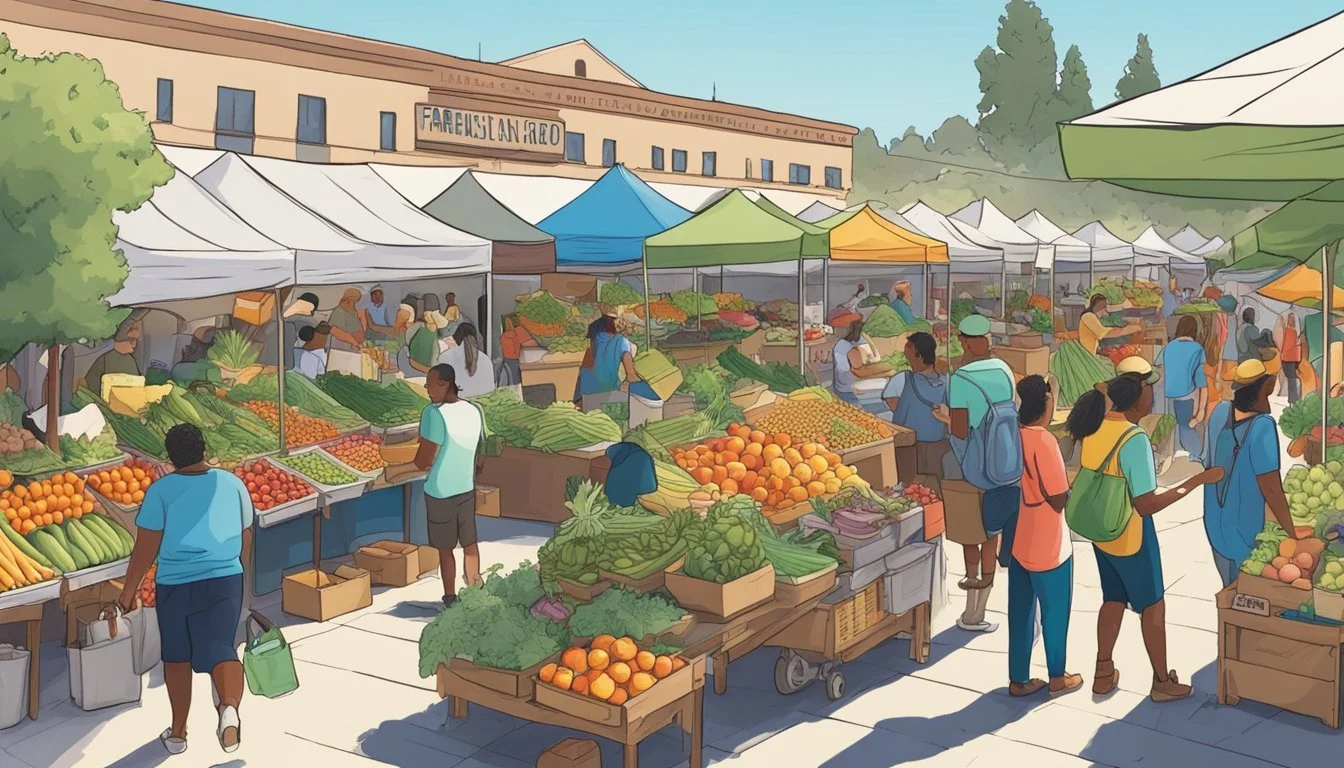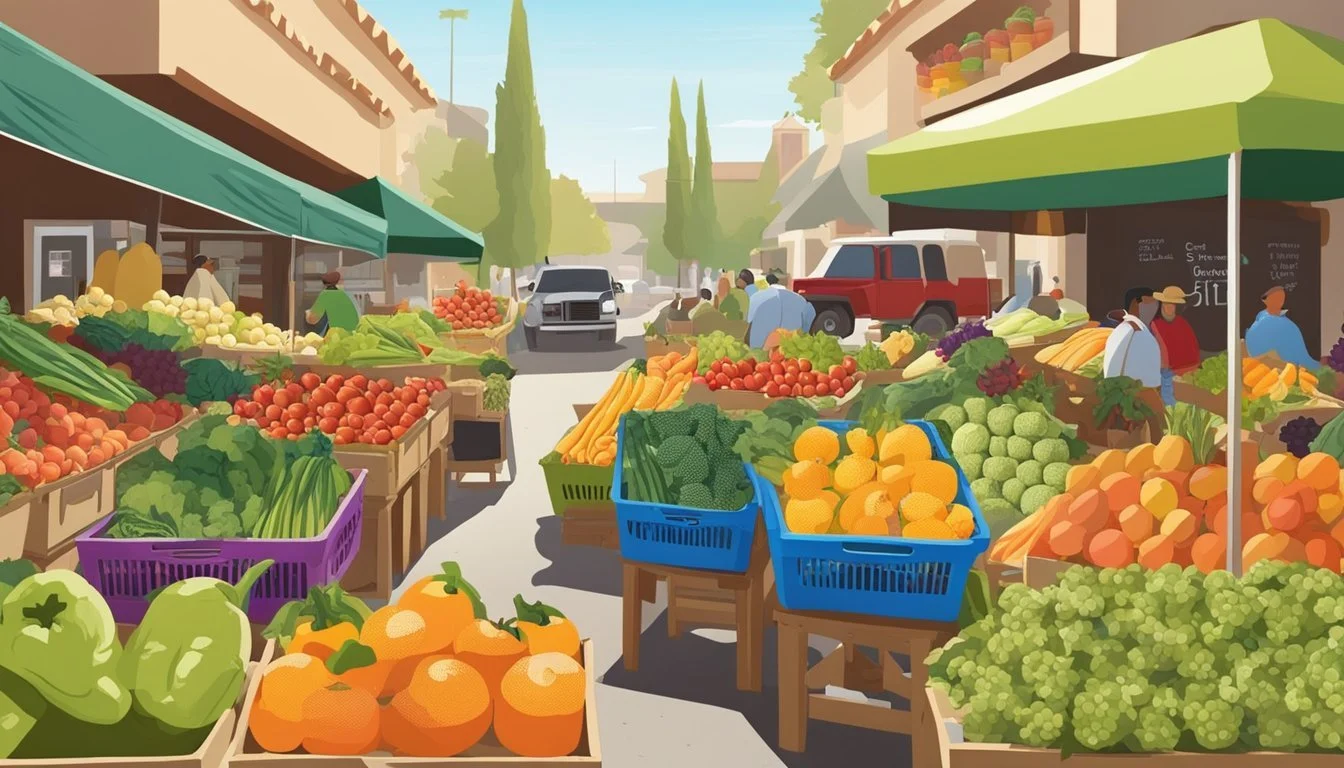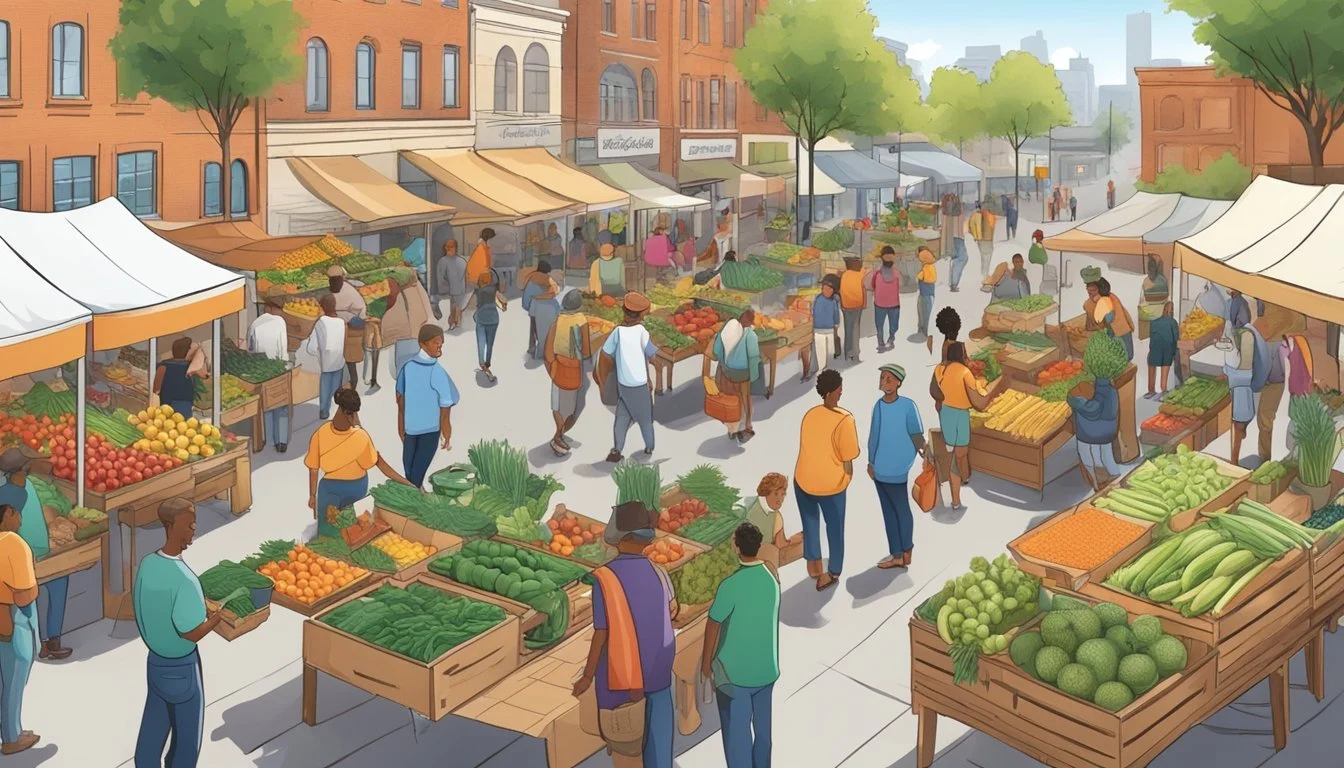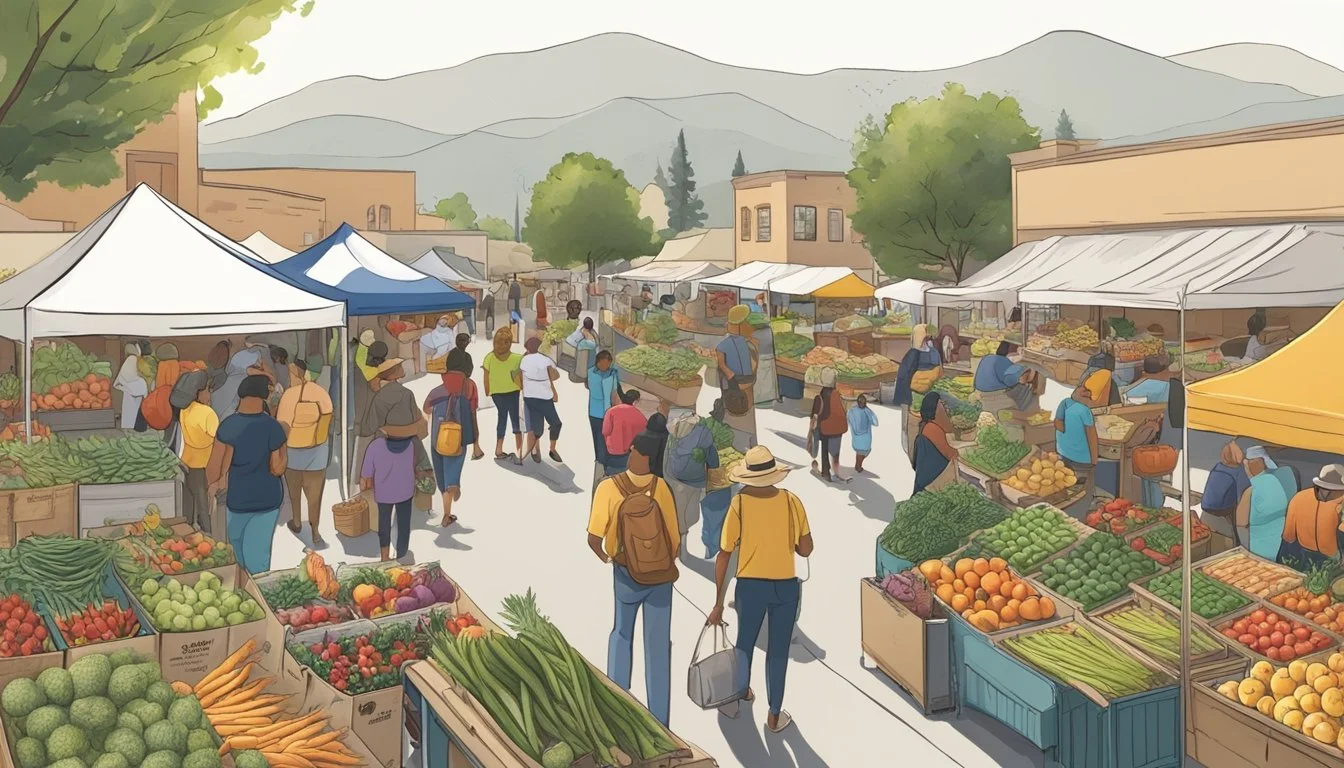Community Supported Agriculture (CSA) in San Bernardino, CA
Benefits and How to Get Involved
Community Supported Agriculture, commonly known as CSA, is an innovative model for connecting consumers directly to local farms, fostering community engagement and ensuring that people have access to fresh, locally-grown produce. Across the nation and in San Bernardino, California, this approach is not only supporting sustainable farming practices but also reshaping the economic landscape of food production and consumption. By purchasing a "share" in a CSA, members receive a regular supply of seasonal produce and other farm products, promoting a healthier lifestyle through a diet of fresh, nutrient-rich foods.
San Bernardino's CSA movement has been gaining momentum, with a variety of farms offering subscriptions to residents seeking to invest in their health and their community. These programs typically deliver a box of seasonally available goods, which might include vegetables, fruit, herbs, and sometimes dairy products or meats. This system allows consumers to enjoy the harvest of their local farms, while farmers benefit from the upfront income and the certainty of a dedicated market for their goods.
Local farms in San Bernardino region such as Three Sisters Farm and Wild Willow Farm have tailored their CSA program to suit the needs of their communities, offering weekly or bi-weekly boxes filled with freshly picked produce. The growth of CSAs in the area is indicative of a broader national trend towards sustainability and community-based food systems, reaffirming that a strong partnership between growers and consumers can lead to mutual benefits and a more resilient local food economy.
Understanding CSA
Community Supported Agriculture (CSA) in San Bernardino, CA, revolves around a symbiotic relationship between local farms and community members who purchase shares of the farm's output.
History of CSA
The concept of CSA began in the early 1960s in Germany, Switzerland, and Japan as a response to concerns about food safety and the urbanization of agricultural land. It reached the United States in the 1980s and has since grown in popularity. In San Bernardino, CA, CSAs have become a means for residents to obtain fresh, local produce directly from the area's farms.
Principles of Community Supported Agriculture
The fundamental principles of CSA emphasize:
Community involvement: Members support the farms financially by purchasing shares, and often participate in the farming process itself.
Direct sales: Farms sell their shares directly to the consumers with no middlemen, fostering a closer farmer-consumer relationship.
Shared risk: Both CSA members and farmers share the risks of farming, including poor harvests due to unfavorable weather or pests.
Sustainability: CSAs support sustainable and organic farming practices, contributing to environmental health.
CSA Business Model
The CSA business model is predicated on a mutual commitment between farmers and community members:
Farmers offer a certain number of shares to the public, typically encapsulated in a box of vegetables and possibly other farm products.
Members purchase a share at the start of the growing season, providing the farmer with the capital needed to grow the season's crops.
Throughout the growing season, usually spanning 20 to 22 weeks, members receive regular deliveries or pick-ups of fresh, seasonal produce.
By following this model, CSAs in San Bernardino create a secure market for the farmer's produce and provide community members with access to fresh food.
Benefits of CSA
Community Supported Agriculture (CSA) offers an array of advantages that impact farmers, members, and the broader community, while also offering positive environmental effects. This symbiotic relationship bolsters the local economy, fosters direct relationships, and promotes sustainable practices.
Advantages for Farmers
Farmers benefit significantly from the CSA model, which provides financial stability through pre-season capital. Members pay for their shares of the harvest upfront, giving farmers working capital at the start of the season. This reduces the financial risks associated with crop failure and market fluctuations. Additionally, it allows them more time to focus on care for crops and sustainable farming practices, as they have a guaranteed market for their produce.
Advantages for Members
Members of a CSA reap benefits in the form of fresh, nutritious produce often at a lower cost than retail. They gain access to a diverse range of locally-grown, and often organic, vegetables and fruits, which can enhance their health and nutritional intake. The direct connection to the farm brings a deeper understanding and appreciation of food sources and seasonal eating.
Advantages for the Community
The CSA model extends its advantages to the community by bolstering the local food system and economy. It keeps money within the local area and helps to preserve agricultural land use, maintaining regional farmland through sustainable practices. The social connections forged between community members and farmers can lead to increased support for local economies and businesses outside the direct farm-to-consumer relationship.
Environmental Impacts
Environmentally, CSAs support sustainable agriculture, which can lead to reduced pesticide use, healthier soil, and a lower carbon footprint. By focusing on local distribution, CSAs decrease transportation distances, which reduces fuel consumption and emissions. As a result, CSAs often have a smaller environmental impact compared to traditional agriculture and long-distance food transport.
CSA Operations in San Bernardino
In San Bernardino, Community Supported Agriculture (CSA) operations embrace the farm-to-table philosophy, providing locally-sourced food to community members while supporting small-scale farmers. These operations are essential for maintaining a sustainable food system and fortifying the local economy.
Local CSA Programs
San Bernardino hosts a variety of CSA programs, each with its own unique assortment of farm-produced goods. Notably, Three Sisters Farm offers a range of fresh produce, operating on a 2-acre land. Their products reach consumers through CSA and local farmers markets, strengthening the bond between growers and local consumers. The Inland Empire CSA highlights another key player in the region, sourcing from De Luz Farms and Nursery in Temecula, enriching the local food assortment with a diverse range of options.
Membership and Subscription Details
CSA memberships in San Bernardino involve purchasing a "share" from local farms, which translates into a regular provision of seasonal food items. For example, subscription options might vary, with some being quarterly, spanning a period of 13 weeks. During each cycle, members receive a box containing about 10-12 different farm-fresh items, such as greens, root crops, herbs, and a selection of vegetables, dependent on the harvest season.
Relationship with Local Farmers Markets
CSAs and farmers markets in San Bernardino are intrinsically linked, with many CSA farms utilizing farmers markets as a distribution point or additional sales channel. This symbiotic relationship allows for community members to interact directly with growers and for farmers to receive direct support from the community. The exchange at farmers markets not only fosters a sense of local solidarity but also opens avenues for consumers to complement their CSA hauls with other regional specialties.
Organic and Responsible Farming
In San Bernardino, California, Community Supported Agriculture (CSA) models are deeply rooted in organic and responsible farming practices. These methods focus on sustainability and provide consumers with fresh, seasonal produce.
Certification of Organic Farms
Certified organic farms adhere to strict guidelines outlined by the United States Department of Agriculture (USDA). In San Bernardino's CSA system, farms such as Sage Mountain Farm and De Luz Farms and Nursery are recognized for their commitment to organic farming. To gain certification, these farms must prove that they avoid the use of synthetic fertilizers, pesticides, and genetically modified organisms (GMOs), upholding a high standard of natural resource conservation and environmental biodiversity.
Responsible Farming Methods
Responsible farming methods are integral to San Bernardino CSA farms. These techniques include but are not limited to:
Crop Rotation: To maintain soil health and prevent disease.
Use of Compost: Reduction of waste by turning organic matter into nutrient-rich soil.
Conservation Tillage: Minimizing soil erosion by leaving crop residue in the fields.
Natural Pest Management: Employing beneficial insects and birds for pest control.
By incorporating these practices, CSA farms like Three Sisters Farm in Redlands, California prioritize the well-being of both the land and the consumers.
Seasonal and Organic Produce Offerings
CSA members enjoy a variety of seasonal produce, emphasizing the importance and benefits of eating foods that are grown and harvested at their peak of freshness and nutritional content. Examples of farm products distributed through the CSA model include a wide range of vegetables and fruits. For instance, consumers may receive 7 to 10 different vegetables per box during the typical harvest season, ensuring diversity in diet and promoting overall health.
San Bernardino reaches out to all community members, including those using SNAP benefits, thereby fostering an inclusive model of food distribution that is not only organic but also socially responsible.
Typical CSA Offerings
Community Supported Agriculture in San Bernardino, California provides a direct way for local consumers to buy high-quality, seasonal produce and more from area farmers. Subscribers to a CSA can expect a range of farm-fresh products delivered regularly.
What's in a CSA Box?
A CSA box typically includes a variety of vegetables and fruits harvested at their peak of ripeness, ensuring flavor and nutritional value. Members might find leafy greens, root vegetables, berries, and orchard fruits depending on the season. Some CSAs also offer herbs and flowers, adding aroma and beauty to their weekly bounty.
Variety of Produce and Add-Ons
The contents of a CSA box are largely determined by what is in season and available on the farm. However, many CSAs go beyond just produce. They may offer add-ons like fresh meat, local honey, homemade jams, and dairy products. This variety enables members to support other facets of local agriculture and enjoy a wider range of local food products.
Share Sizes and Customization
CSA shares typically come in different sizes to accommodate various household needs:
Full Share: Suitable for families, often a large box of produce delivered weekly.
Half Share: A smaller option, which can be a small box or a large box delivered every other week, fitting for individuals or smaller households.
Some CSAs offer customization of the share, allowing members to choose from the available produce to meet their personal preferences. The flexibility supports a customized approach to local food consumption.
Community Impact and Education
Community Supported Agriculture (CSA) programs in San Bernardino, CA, are influencing local communities by emphasizing the importance of nutrition, providing education on healthy eating, and fostering a connection between food producers and consumers. They serve as a platform for health and nutrition workshops, integration of CSA into school curriculums, and organization of community events centered around food literacy.
Nutrition and Health Workshops
San Bernardino CSA programs actively offer nutrition and health workshops aimed at teaching community members how to incorporate fresh produce into their daily diets. These workshops provide practical information on:
Balanced diets: Educators demonstrate how to craft nutritious meals using the produce from CSA boxes.
Recipe preparation: Members learn how to prepare simple, wholesome recipes using seasonal ingredients.
CSA Programs in Schools
Schools in San Bernardino have begun to introduce CSA programs into their education system with the following objectives:
Nutritional education: Students understand the importance of fresh produce and its impact on their health.
Hands-on learning: Children engage in the growing process, which reinforces their connection to food and its origins.
Students also participate in:
Cooking classes: These classes help them learn how to transform CSA ingredients into healthy meals.
Community Events
CSA organizers in San Bernardino frequently host community events to foster a sense of collective participation. Collaborative activities include:
Harvest festivals: Where families can learn more about local agriculture and participate in the harvest.
Meet-and-greets with farmers: These provide opportunities for community members to ask questions and gain insights directly from those growing their food.
Such events often culminate in communal meals that showcase the versatility of local produce in a variety of dishes.
Logistics and Distribution
The successful operation of Community Supported Agriculture (CSA) in San Bernardino hinges upon efficient logistics and distribution which ensure that members receive their shares of fresh food promptly and safely.
Delivery and Pick Up Locations
In San Bernardino, CSA members can collect their shares of farm fresh produce from designated pick up locations or have them delivered directly. For instance, the Inland Empire CSA has specified Idyllwild (Fri) as one of their pick up spots. Efficient distribution channels are crucial to guarantee that produce reaches consumers at peak freshness.
Inland Empire CSA Pick Up
Address: 22250 Corte Bonita, Temecula, CA 92593
Contact: Gary Leavitt, Phone: 951-693-0272
Packaging and Food Safety
CSAs in San Bernardino take special care in packaging to preserve the quality and ensure the safety of the farm fresh produce. Reusable containers and eco-friendly packaging materials are often used to maintain sustainability and reduce waste. Compliance with food safety standards is imperative throughout the handling and distribution process to ensure that the fresh food is safe for consumption upon delivery or pick-up.
Membership Management
Managing memberships within a CSA model requires a systematic approach to track member subscriptions and their commitment duration. In San Bernardino CSAs, members may pay on a weekly basis but are typically encouraged to commit to a certain period, such as a six-week cycle, to facilitate planning and distribution. This structured approach aids CSAs in projecting demand and aligning harvest with member needs effectively.
Membership Subscription Model
Full Price: $25 a box for 7-10 vegetables
Affordable Price: $10 a box for 7-10 vegetables (Subsidized for qualifying members)
Commitment: Recommended 6-week minimum subscription.
Understanding CSA Data
Community Supported Agriculture in San Bernardino operates based on a wealth of data that informs market trends, membership responsiveness, and seasonal production. The following subsections delve into the specifics of CSA data within this regional context.
Market Research and Trends
Market managers in San Bernardino utilize data to track the growth and preferences within the CSA landscape. Recent research indicates that CSA programs have seen an uptick in participation, underscoring a trend towards locally sourced food. Market dynamics are heavily influenced by customer demand for organic and sustainable produce, with families increasingly committing to CSA shares.
Primary Data Sources: CSAs report product sales and customer feedback.
Trends: An increasing number of farms participate in CSA programs, reflecting more diverse and plentiful offerings.
Customers: CSA customers in San Bernardino lean towards a demographic that values health and community engagement.
CSA Membership Data Analysis
Analyses of CSA membership data shed light on the socio-economic makeup of participants. The data suggest that members are typically well-educated, middle- to upper-class individuals, with a propensity to support local agriculture. This data is crucial for market managers and farmers as they tailor their services to meet the preferences and needs of their clientele.
Demographics: It includes age, household size, income levels, and subscription preferences.
Engagement: Frequency and duration of memberships, renewal rates.
Feedback Mechanisms: Surveys and direct feedback help shape CSA offerings.
Seasonal Availability Reports
Seasonal availability reports provide insight into the production and distribution cycles of CSAs. They highlight which crops are available at different times of the year, informing members of the variety and freshness of their produce. These reports help families plan their meals around seasonal produce and allow CSAs to efficiently manage their resources.
Data Collected: Includes harvest volumes, crop variety, and distribution timelines.
Impact on Families: Families benefit from knowing the seasonality of their food, enabling better nutrition and meal planning.
APIs for Data Sharing: For tech-savvy CSAs, Application Programming Interfaces (APIs) offer a method for sharing real-time data on crop availability with customers and market researchers.
Support and Resources
Community Supported Agriculture (CSA) participants in San Bernardino, CA, have access to various support resources, including financial programs, educational content, and digital tools. These resources aim to facilitate engagement with local food systems and enhance the CSA experience for both consumers and farmers.
Financial Assistance and SNAP
CSA members may be eligible for financial assistance through programs that support local agriculture. SNAP (Supplemental Nutrition Assistance Program) benefits can often be used to purchase CSA shares, making fresh, local produce accessible to a broader community. Local farms and CSA coordinators should provide clear instructions on using SNAP for their produce, ensuring that healthy food is not a privilege but a right for all community members.
Educational Materials and Guides
Educational resources are vital for members and farmers alike. New members can find informative print materials and online guides detailing how to store and prepare the season's produce, while farmers can access resources on sustainable farming practices and CSA management. Educational initiatives strengthen the local farming community by promoting knowledge sharing and best practices.
Online Platforms and Apps
A variety of online platforms and apps have been developed to connect consumers with their local CSA programs. These digital tools often come with an API (Application Programming Interface) that enables integration with other systems, making it easier to manage subscriptions, payments, and communication. Such platforms increase the accessibility of CSA programs, helping to streamline operations and maintain robust support for local agriculture.
Challenges and Solutions
Community Supported Agriculture (CSA) in San Bernardino, CA, faces distinct challenges, but through innovative approaches and strong customer relationships, solutions are emerging that bolster the model's sustainability and community impact.
Addressing Common Obstacles
Challenges: One pressing issue for San Bernardino CSAs is achieving affordability while covering production costs. A typical CSA share with 7-10 varieties of vegetables can range around $25, a price point not accessible for all community members.
Solutions: To counter this, CSAs have introduced tiered pricing strategies, allowing customers to pay $10 a box. Payment flexibility is also promoted, encouraging members to commit to a 6-week period without advance full-season payment, lessening the financial burden for customers and increasing participation.
Innovation in CSA Models
Challenges: The conventional CSA model requires customers to heavily engage, which can deter participation.
Solutions:
CSA Coordinators have been introduced to manage the process, from harvesting to home delivery, enhancing efficiency.
Affordable Pricing: By offering reduced prices, CSA participation becomes more inclusive.
Building Strong Customer Relationships
Challenges: Customer retention and satisfaction can be formidable due to varying expectations and communication gaps.
Solutions:
Direct Interaction: Regular feedback loops are established for consumer input, fostering transparency and trust.
Community Engagement: Events and farm visits are organized to create a sense of belonging and investment among members, securing long-term relationships.
By tackling these specific challenges with focused solutions, CSAs in San Bernardino are working towards a more resilient and community-centric food system.
Local CSA Spotlights
Community Supported Agriculture (CSA) provides a means for consumers in San Bernardino, CA to access fresh, locally grown produce directly from farmers. The region hosts a variety of CSAs, each offering unique contributions to the local food movement.
De Luz Farms and Nursery
De Luz Farms and Nursery in Temecula offers a rich selection of farm products. CSA members can regularly receive a diverse harvest, ensuring a direct connection between the farm's offerings and the community. Contact person Gary Leavitt provides the necessary information and services for those interested in subscribing.
Family Farms in Temecula
Temecula is known for its collaborative family farms, which supply a range of organic products. They exemplify the CSA model, where multiple local farms, like Menos Farms and Moonrise Farms, come together to offer an assortment of fresh produce. These family farms often provide the backbone for multi-farm CSAs, enhancing the variety available to members.
Southern California's Inland Empire CSA Region
The Inland Empire CSA region encompasses a network of local farms that serve the broader Southern California locality, including San Bernardino. Through subscription-based programs, residents can receive weekly baskets of pesticide-free produce. CSAs in this region are integral in connecting consumers to a fresher food source while supporting local agriculture.
The CSA concept thrives on the principles of fresh, local, and community-oriented food distribution. In the San Bernardino area, these CSA programs offer a gateway to sustaining local farms and ensuring that consumers have access to nutritious farm products.

